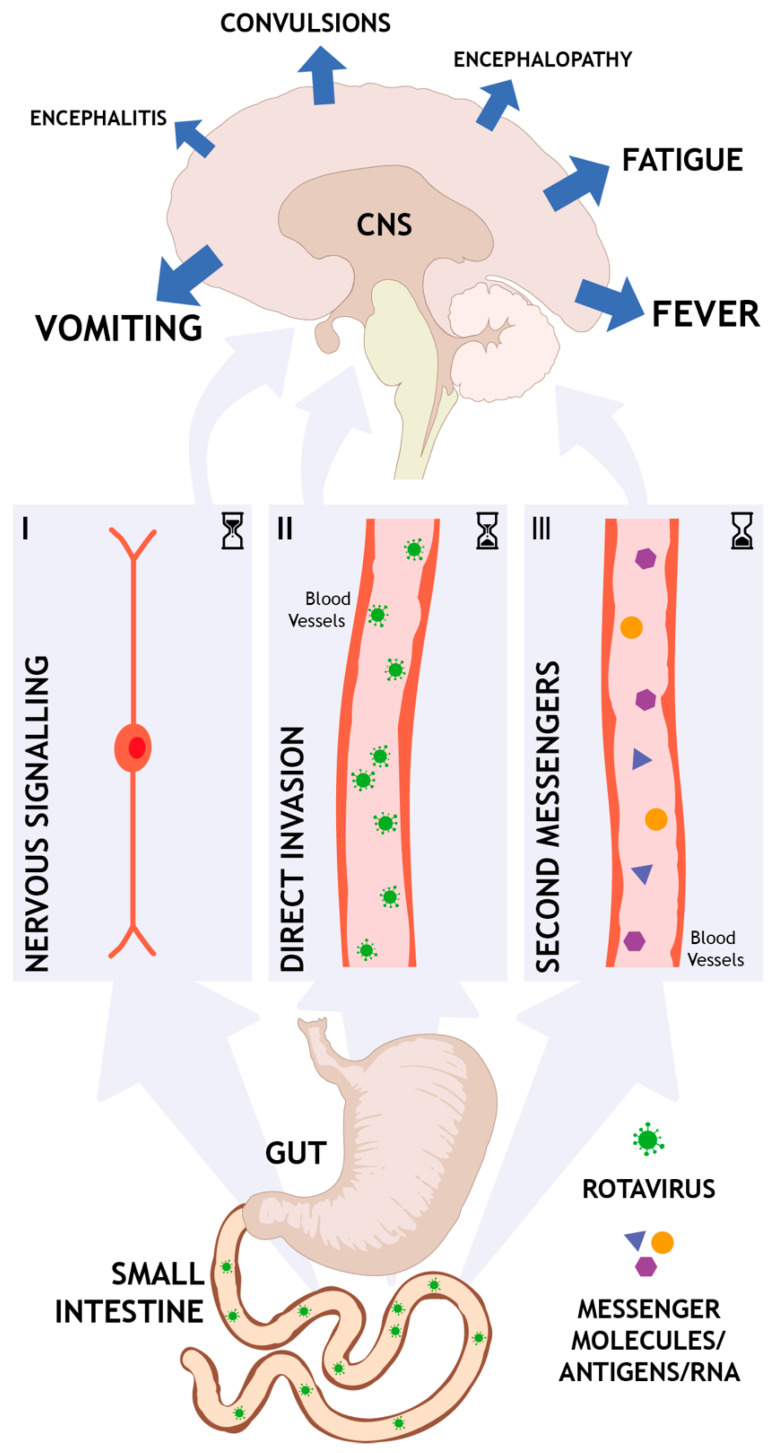Figure 1.
Schematic representation of possible routes by which rotavirus infection can affect the brain to give rise to central nervous system (CNS)-associated symptoms. From very early on, infection-induced released mediators like rotavirus enterotoxin nonstructural protein 4 and serotonin can activate nerves (I) that propagate the signal to the brain. In hosts suffering from malnutrition, immunosuppression, or immunodeficiency, virus/-antigen/-RNA may enter the bloodstream and/or the lymphatic system, and together with dysfunction in the blood brain barrier there is a possibility that they directly enter the brain (II) to cause less prevalent symptoms like encephalitis or encephalopathy. However, evidence that rotavirus enters the brain is lacking. Finally, infection-induced systemic elevation of rotavirus-antigens or -RNA, toxins, cytokines, and/or other messenger molecules may indirectly (III) affect the brain. Routes are not exclusive and could overlap or occur at different timepoint in the same host. Hour glasses represent time lapse post infection. Less common symptoms represented by smaller arrows and text.

